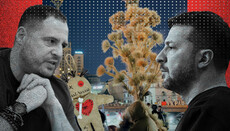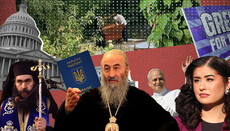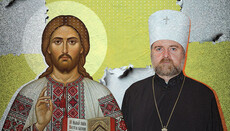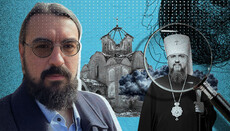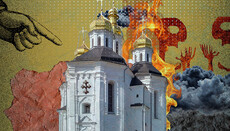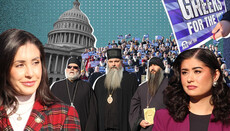Schism is no longer the same: myths of ex-metropolitan Alexander about OCU
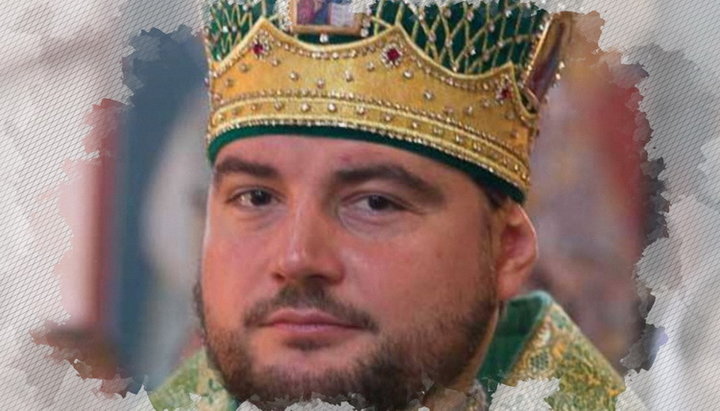
How the former metropolitan of Pereyaslav-Khmelnitsky and Vishnevoye’s community attempted to whitewash the OCU and what came out of it.
In civil proceedings there is such a scheme: the claimant sends a lawsuit to the court with his arguments, the defendant expresses his objections, and then the claimant has the right to present the surrejoinder before the court.
The Ukrainian Orthodox Church warns anyone who wants to join the newly established OCU or thinks about it that it is non-canonical and graceless; joining it is a betrayal of the Church of Christ and does not lead to salvation.
Proponents of the OCU, and more specifically, the community led by former Metropolitan Alexander (Drabinko) shot a video in which they referred to the UOC’s arguments as myths and tried to debunk them.
In turn, we will also write our “objections to objections” for the readers’ judgement. Let everyone evaluate both and make a conclusion for themselves, remembering that a mistake can cost eternal life.
Point 1
(hereinafter quotes are taken from the site of the former Metropolitan Alexander (Drabinko)).
“They say they should not join the OCU, since by doing so they will betray our Orthodox faith.
Not true. There is no betrayal because the OCU is the Orthodox Church, i.e. the one that firmly adheres to Orthodox dogma, enshrined in the Creed, other resolutions of the Ecumenical and Local Councils, and the rules of St. Apostles, Holy Fathers and decrees of the All-Orthodox Holy and Great Council in Crete 2016.”
Here, supporters of the OCU are engaged in the substitution of concepts and try to convince that the OCU adheres to Orthodox dogmas, and therefore, joining it is not an act of perfidy in relation to the Orthodox faith.
There is a betrayal – because one of the main tenets of the Orthodox faith is the dogma of the Church. It is possible to fall away from the Church, and, therefore, from the Orthodox faith, in three ways: by falling into heresy, by splitting and holding an arbitrary gathering (parasynagogue).
We will not talk about the latter, but what distinguishes heresy and schism can be said by the words of St. Ignatius Brianchaninov: “A split is a violation of full unity with the Holy Church, with the exact preservation, however, of the true doctrine of dogmas and sacraments. Violation of unity in dogmas and sacraments is heresy.”
Heresy is a sin more serious than schism, though the latter is considered by the holy fathers as a deadly sin leading to destruction. "Schism is no less evil than heresy" (St. John Chrysostom).
“Remember that the founders and leaders of the schism, violating the unity of the Church, counteract Christ and not only crucify Him for the second time but tear apart the Body of Christ, and this is such a grave sin that martyr's blood cannot atone for it” (St. Cyprian of Carthage).
“Christ will judge those who cause splits – those who do not have love for God and care more about their own benefit than about the unity of the Church, dissecting and tearing the great and glorious body of Christ for unimportant and accidental reasons, and destroying it as much as it depends on them; those speaking about peace and doing warfare" (St. Irenaeus of Lyons).
Our opponents refer to the Creed. Well, it reads as: "I believe ... in One, Holy, Catholic and Apostolic Church." All actions to transform the schismatic UOC KP and the UAOC into a “canonical” OCU were done solely by Constantinople, and not by the Conciliar (Catholic) Church. And that’s a fact. No one, except Constantinople, has ceased considering the UOC KP and the UAOC, which merged into the OCU, as schismatics. This is also a fact. Not to mention the fact that the Church does not know any other way of returning from schism (as well as from any other sin), except for repentance.
Point 2
“They say that the UOC of the Moscow Patriarchate already has a Tomos, has all the necessary rights and is recognized throughout the Orthodox world.
Not true. The document in question is a missive letter of the Moscow Patriarch Alexy II of 1990, which granted the UOC the right of broad autonomy and self-government. Such canonical formation as the "Church with the rights of broad autonomy" does not exist at all in Orthodox canonical law. At one time, such a transitional form was invented in order to relieve those who wanted autocephaly. This formation is neither an autocephalous Church, nor even an autonomous one. From the point of view of the Local Autocephalous Churches, the UOC of the Moscow Patriarchate is total dioceses of the Russian Orthodox Church in the territory of the state of Ukraine.”
Firstly, the term “Tomos” itself has rather a broad interpretation. It can be referred to a letter, a definition, a message, and much more. Therefore, the Letter of His Holiness Patriarch Alexy II of 1990 may well be called the Tomos.
Secondly, in this Letter there are no words “Church with the rights of broad autonomy.” Here is the document. Its text is worthy reading as a whole.
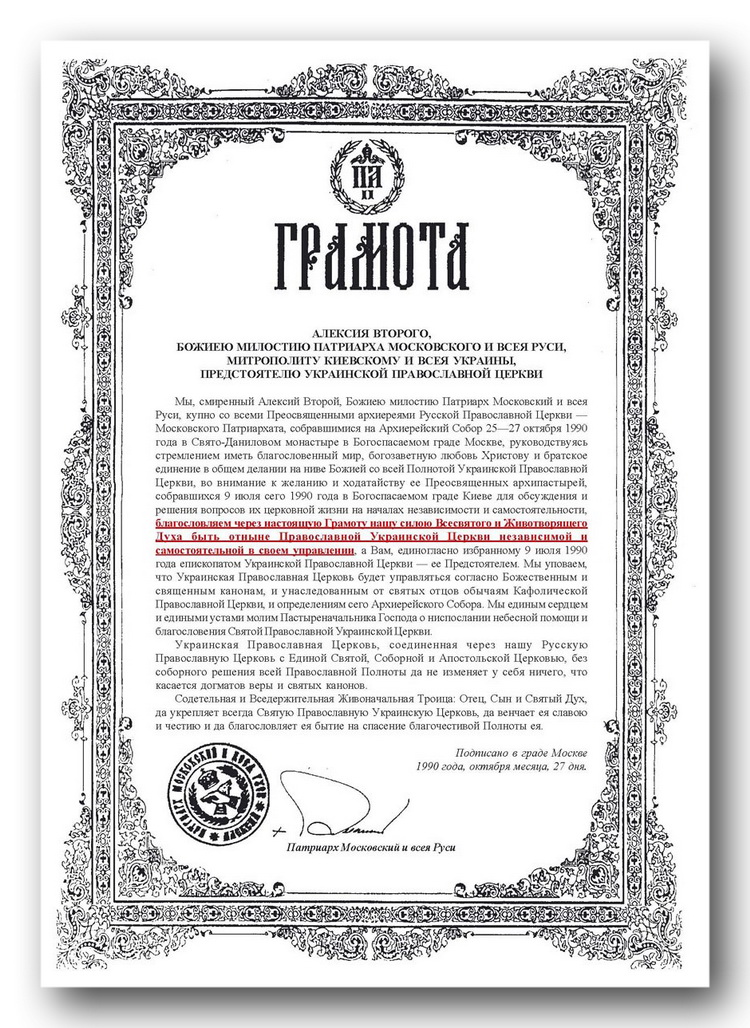
According to this Letter-Tomos, the entire Orthodox world recognizes the UOC as independent and self-governing.
Thirdly, in canon law, if by this we mean the rules of the Ecumenical and Local Councils and Holy Fathers, there is generally no definition of an autonomous church, neither autocephalous, nor an exarchate, nor a metropolitan district. There is no list of the rights and powers of these canonical structures. All this is contained in the statutes of the Local Churches and the statutes of the structures mentioned.
“Remember that the founders and leaders of the schism, violating the unity of the Church, counteract Christ and not only crucify Him for the second time but tear apart the Body of Christ, and this is such a grave sin that martyr's blood cannot atone for it.”
St. Cyprian of Carthage
Fourth, the status of the UOC was invented not in order to “relieve those people who wanted autocephaly” but to preserve the Ukrainian Orthodox Church as such. Opponents of the UOC and pseudo-patriots do not want to understand one simple truth: Ukraine is very different and it is impossible to apply here “one-size-fits-all” approach. But the UOC understands this, and therefore, it has found such a canonical status for itself which suits both supporters of full autocephaly and adherents of closer unity with the Russian Orthodox Church.
As for the words “From the point of view of the Local Autocephalous Churches, the UOC of the Moscow Patriarchate is total dioceses of the Russian Orthodox Church in the territory of the State of Ukraine” is an outspoken lie. In all the documents, letters and telegrams, the UOC is called the Ukrainian Orthodox Church and not the “total dioceses of the ROC”.
Point 3
“The provisions of the Tomos for OCU are said not to imply independence but, on the contrary, dependence on the Patriarchate of Constantinople.
Not true. Often, the autocephaly of the Church is compared with the independence of the state. This is an erroneous view inherent in the Russian ecclesiastic mentality. Indeed, autocephaly does not mean absolute independence. <...> The Greek world is also distinguished by the ancient Churches, which received their autocephaly during the period of the Ecumenical Councils, and the new autocephalies having been granted later. <...> Therefore, from the point of view of Greek ecclesiology, these Churches do not have the right to grant an autocephaly to their parts. Since we speak of autocephaly not as complete independence but as a certain form of interconnections between the churches, the question of primacy in the Orthodox Church is consistent. <...> Someone should be the first. The primacy of Constantinople logically follows from the order that the Greek churches have. Indeed, everybody is independent, but there must be an instance that will help solve such problems that the Churches themselves cannot solve within themselves.”
Firstly, the comparison of autocephaly with state independence is a view inherent not in the “Russian ecclesiastic mentality”, but in the mentality of the one who answered this question. All Russian theology and all the bishops of the Russian Orthodox Church talk about the unity of the Church of Christ throughout the world, and not about some absolute independence of all from everyone.
Secondly, OCU depends on Constantinople in many key issues of its management. Its dependence on Phanar is greater than the dependence of the UOC on the Russian Orthodox Church.
Thirdly, what are the collocations like “the Greek world”, “the Greek ecclesiology”, “the system that the Greek Churches have” all about? Have the Greeks already replaced the Orthodox Church? Have Greeks become the ultimate truth? However, everything seems all right. The author admits that all the arguments expressed by him are recognized by the Greeks (by the way, not all), but not the One, Holy, Catholic and Apostolic Church, which Orthodox Christians believe. Maybe, the author already believes in a special Greek Church?
Fourth, the issue of primacy. “Someone should be first,” says the author. At first it was said by the Pope, in our time it is said by Constantinople. But the Vatican, precisely because of this statement, fell away from the Church. Phanar, apparently, decided to follow it.
The primacy in the Church is possessed only by our Lord Jesus Christ. The Church affirms this not only in a general, speculative plan, but in the most particular and specific one ever. Christ rules His Church directly. “I am with you all the days until the end of the age. Amen” (Matt. 28, 20). The way in which God's will is revealed on specific issues is the Council of Bishops, but by no means one person.
Point 4
“It is said that the Patriarch of Constantinople had no right to unilaterally decide the 'Ukrainian issue' without the consent of all the other autocephalous Churches. Such a step is a gross violation of the canons.
Not true. Only the Ecumenical Patriarch has that right. This is evidenced by both history and canons. In general, there are still no canons in the Orthodox Church regarding the procedure for granting autocephaly. It should have been discussed at the Pan-Orthodox Council in Crete, but was not even included in the agenda. So, Patriarch Bartholomew acted in accordance with his powers, enshrined by the 9th and 17th canons of the IV Ecumenical Council. By the way, such an appeal right of his was always recognized, including by the Russian Church. And then, when the ROC was in schism (55 canon of the Stoglavy Sobor in 1551) and up to the twentieth century, when it appealed to the Ecumenical Patriarch on the self-proclamation of autocephaly by the Georgian Church.”
Indeed, the Church of Constantinople could not solve the “Ukrainian issue”. No canon gives this Church that right. The author refers to the 9th and 17th rules of the IV Ecumenical Council. Let's take a look at them.
9th canon: “When one clergyman has a dispute with another clergyman, the present Canon prescribes that he must not leave his own bishop and present his case to secular courts, but, on the contrary, he must first present it to his bishop, or else, with the permission and consent of his bishop, he may have his case tried by referees (or chosen judges), with whom both parties, the plaintiff and the defendant, are well pleased. As for any clergyman that does otherwise, let him be subjected by the bishops to canonical penalties. But when a clergyman has a dispute with his own bishop, let the case be tried before the Synod of the province. When, again, a bishop or a clergyman has a dispute with the Metropolitan, let him go to the Exarch of the diocese, or to the throne of the imperial capital Constantinople, and let the case be tried by him.”
17th canon: “As touching rural parishes, or country parishes, in any province, they shall remain in the undisputed possession of the bishops now holding them, and especially if they have held them in their possession and have managed them without coercion for thirty years or more. But if during a period of thirty years there has arisen or should arise some dispute concerning them, those claiming to have been unjustly treated shall be permitted to complain to the Synod of the province. But if anyone has been unjustly treated by his own Metropolitan, let him complain to the Exarch of the diocese, or let him have his case tried before the throne of Constantinople, according as he may choose. If, on the other hand, any city has been rebuilt by imperial authority, or has been built anew again, pursuant to civil and public formalities, let the order of the ecclesiastical parishes be followed.”
The primacy in the Church is possessed only by our Lord Jesus Christ. Christ rules His Church directly. “I am with you all the days until the end of the age. Amen” (Matt. 28, 20).
One might think that these rules really give the Patriarch of Constantinople the right to consider clergy appeals from all the Local Churches. But in reality – no. The Patriarch of Constantinople can only judge the clerics of his own Church in Constantinople. Both the ancient and the new interpreters of the canons of the Ecumenical Councils speak clearly and unambiguously about this.
“In addition to what has been said, and so that no one would think that the Patriarch of Constantinople has an unconditional right over all metropolitans and outside the boundaries of his patriarchate, we will cite Zonara’s interpretations (the Byzantine canonist and theologian of the 12th century – Ed.) on this rule: ‘But not exceptionally over all Metropolitans can the Patriarch of Constantinople be the judge, but only over those subordinate to him, because he cannot bring to his own court the metropolitans of Syria or Palestine and Phoenicia, or Egypt against their will, but the metropolitans of Syria are subject to judgment of Patriarch of Antioch, while the Palestinian are subordinate to the Patriarch of Jerusalem; the Egyptian should be judged by the Patriarch of Alexandria, whom they are ordained by and subordinate to’” (the clergyman Nikodim (Milash) “Rules of the Holy Apostles and Ecumenical Councils with interpretations”).
The author's phrase that the Russian Church "was in schism” provoked sincere amusement. And where was the church of Constantinople when it signed the Union of Florence with Rome in 1439? As a result of the Florentine Union, the Church of Constantinople ceased to be Orthodox, while the Russian Orthodox remained and has since been governed independently, although it did not consider itself autocephalous until 1589, when Patriarch Jeremiah of Constantinople and a little later all the other patriarchs recognized the Russian Church as the Patriarchate.
The fact that the Russian Church humbly recognized itself not to be fully autocephalous but part of the Patriarchate of Constantinople is also explained in rule 55 of the Stoglavy Sobor, which recognizes the court of the Patriarch of Constantinople. After all, Stoglav was held in 1551, 38 years before the recognition of the Russian Church as the Patriarchate.
Various exuberant recognitions of someone as the best of the best were common at that time. For example, Patriarch Joasaph II of Constantinople in 1562 issued a Letter (Tomos) to the Russian Tsar John the Terrible, in which he recognized him no less than “the tsar and sovereign of Orthodox Christians of the whole universe from the East to the West and to the ocean”.
Point 5
“They say that Patriarch Bartholomew did not have the right to interfere in the internal affairs of the Russian Orthodox Church, since Ukraine is its canonical territory.
Half true. Consequently, not true. Yes, he had no right but until a certain moment. Despite the fact that the 1686 act on the right to set up the Metropolis of Kiev was grossly violated, as recorded in the Tomos on autocephaly of the Polish Church in 1924, it was never officially canceled until October 11, 2018. This date is a turning point because in this way by the decree of the Holy Synod of the Ecumenical Patriarchate, the ancient Kiev Metropolis of the Church was restored so that the autocephalous OCU could be created on its basis.”
The decision of the Holy Synod of October 11, 2018 on revoking the letter of 1686 on the transfer of the Kiev Metropolis to the Russian Orthodox Church has no power for the following reasons.
In 1686, the transfer of the Kiev Metropolis from one Local Church to another took place by the mutual consent of the two Churches. The reverse action is also possible with the consent of these two Churches. In this case, the ROC did not give its consent thereupon. In the event of the ROC’s refusal, the issue of transferring the Kiev Metropolis back to the Constantinople Church could be resolved only by the highest governing body of the Orthodox Church – the Ecumenical Council but it didn’t take place.
The transfer by Constantinople of the Kiev Metropolis to Moscow in 1686 was recognized by all the most ancient Local Churches: Alexandria, Antioch, and Jerusalem, as is the case with the relevant documents. Today, the unilateral declaration of Constantinople about the return of the Kiev Metropolis was not recognized by any Local Church.
For more than 300 years, Constantinople has not claimed any violations, alleged or actual, of the terms of the transfer of the Kiev Metropolis. Thus, all conceivable periods of limitation were missed. The 17th rule of the IV Ecumenical Council establishes a thirty-year statute of limitations for the possible conciliar consideration of disputes regarding the ownership of even individual parishes: “As touching rural parishes, or country parishes, in any province, they shall remain in the undisputed possession of the bishops now holding them, and especially if they have held them in their possession and have managed them without coercion for thirty years or more.”
“But not exceptionally over all Metropolitans can the Patriarch of Constantinople be the judge, but only over those subordinate to him.”
John Zonara
The Kiev Metropolis back in 1686 included territories located not only in Ukraine. Some of them were located on the lands of present-day Belarus, Latvia and the Russian Federation. On the other hand, about two thirds of the territory of Ukraine has never been part of the Church of Constantinople. The present territory of the country from the then Kiev Metropolis includes only Kiev, Lutsk, Lvov and Chernigov eparchies. And the eparchies like Odessa, Kherson, Nikolaev, Simferopol, Donetsk, Krivoy Rog, Lugansk, Konotop, Zaporozhye and many others were established already in the XVIII century and later. Nevertheless Constantinople declared it had restituted only that part of the Kiev Metropolis that is located on the territory of Ukraine, which is a violation of the terms for the transfer of the Kiev Metropolis in 1686. Phanar also claimed it was going to appropriate the south-eastern eparchies of Ukraine, which had never belonged to it, which is a direct violation of the "don't steal" commandment.
The Kiev Metropolis of 1686 and the current Ukrainian Orthodox Church dramatically differ in the number of episcopates, clergy, parishes, monasteries, religious schools, and so on. The end of the XVII century in the Ukrainian lands is characterized by historians as “Ruin”. Having given Moscow the devastated Metropolis of Kiev in 1686, Constantinople now wants to receive the Ukrainian Orthodox Church in its present flourishing state. Again we have a violation of the commandments "do not steal."
Point 6
“They say that the government had no right to interfere in church affairs, and therefore the OCU is a purely political project, this is the “Church of Poroshenko ”.
Not true. The position of the state has always been important in the proclamation of the newest autocephaly. Moreover, sometimes autocephaly was not proclaimed by the Church but by the state. It was the case in Greece in 1833. And only in 1850 this autocephaly was recognized.”
Firstly, the government has no right to interfere in church affairs according to the canons of the Church. The 30th rule of the holy apostles says: "As soon as a bishop, having used secular power, receives episcopal authority in the Church with their help, he must be exterminated and excommunicated, and all those who are in communion with him."
This is exactly what happened with Epiphany Dumenko, who having “used the secular power” became the head of the OCU. Petro Poroshenko, Andrey Paruby, Vladimir Groysman and other today's secular rulers of Ukraine created the OCU. Poroshenko led all the negotiations directly, convened a “unification council” on December 15, 2018, and supervised its work from the presidium. In the Tomos on the creation of the OCU, Poroshenko is listed as one of its recipients, which is an unheard thing for the Orthodox Churches.
The OCU has no other tasks than political ones. It is intended to become the basis of Ukrainian statehood and independence, as all its members and supporters are talking about. For example: “Ukraine’s receiving Tomos is an extremely important spiritual component of our independence. No less important than the Act of State Independence and the referendum on state independence, which occurred in 1990 and 1991. <...> Our one church is a spiritual foundation of the Ukrainian state” (Petro Poroshenko’s speech in Vinnitsa on January 13, 2019).
Therefore, the conclusion is clear: the OCU was created by the will of politicians and for solving political problems. Therefore, it cannot be the Church of Christ.
Secondly, examples of other “newest autocephalous structures” are inappropriate in this case. These were the states that declared themselves and recorded in their Constitutions that they are Orthodox. For example, art. 38 of the Constitution of the Bulgarian Kingdom of 1879 reads: “The Bulgarian tsar cannot profess any other faith except the Orthodox.” Art. 39: "The Bulgarian kingdom in the church relation, making up an inseparable part of the Bulgarian church area, is subordinated to the Holy Synod – the highest spiritual authority of the Bulgarian Church, wherever this power resides."
The Ukrainian Constitution says that “the Church and religious organizations in Ukraine are separated from the state, and the school is separated from the Church. No religion can be recognized by the state as obligatory” (Article 35).
In order for the Ukrainian authorities to organize the OCU, they had to change the Constitution of Ukraine in the first place. And then it would be logical to prohibit gay parades, abortions and other abominations, for when it comes to intruding into the Church – they are Orthodox, but when it comes to living up to the Gospel – they are European-fashion liberals.
Point 7
“They say that OCU is not recognized by any of the autocephalous Churches, except Constantinople, and will never be recognized.
Half-true. Consequently, not true. Indeed, the OCU at the moment (a month after the delivery of Tomos) is recognized only by the Ecumenical Patriarchate. Other Churches continue to study the Ukrainian question. Each of them will make a conciliar decision in its time, and only this decision will be important, rather than personal statements of certain hierarchs, on which they are now speculating a lot and wish to present their position as a single position of the entire Church.”
Consequently, the author agrees that no Local Church recognizes the OCU. Then comments are pointless. By the way, it is the third month since the “Unification Council” day. Russian, Polish, Serbian, and on February 18, Cypriot Churches have already officially declared their non-recognition of schismatics. What will decide the rest – time will tell. However, the actions of Constantinople are so lawless that to recognize them is to sign for one’s complete dependence on external patrons.
Point 8
“They say that the OCU is a legalized split.
Not true. The OCU was created by granting autocephaly to the restored Kiev Metropolis, which included all those who wished it. On October 11, the clergy and believers of the UOC KP and the UAOC were reinstated by oikonomia, i.e. by grace. They became part of the Patriarchate of Constantinople. <...> So, Tomos was not awarded to schismatics, but to the canonical believers of the Constantinople Patriarchate.”
The author tries to justify one lawlessness by another lawlessness. The Phanar’s decision to reinstate schismatics from the UOC KP and the UAOC in the Church is as invalid as all its other decisions on the “Ukrainian issue”. The fact that Constantinople had no right to “return” the Kiev metropolis of 1686 year to itself was already mentioned in Point 5.
Constantinople claims it “removed the anathema” and declared the Ukrainian schismatics, Filaret Denisenko and Makary Maletich with all their followers “reunited with the Church”, since it has the authority to judge the last resort clerics from other Local Churches. However, this decision of Constantinople is invalid for the following reasons.
Constantinople does not have and never had the authority to judge the bishops and clergy of other Local Churches. The 17th rule of the IV Ecumenical Council grants the bishop of Constantinople the right of judgment only over the bishops of his Church of Constantinople and not any other. That is how this rule was understood by John Zonara, as we wrote above.
Constantinople declared itself a supreme judge, but did not hold any litigation of the case of Filaret Denisenko and Makary Maletich. There was no meeting in which the Synod or another body would hear the arguments of both Denisenko and Maletich, as well as the UOC and the ROC, which imposed canonical bans on them. No adjudication of this matter was made.
Anathema or other canonical bans against the episcopate and the clergy can be lifted either by the person who imposed them or by the higher authority. Filaret was anathematized by the Bishops' Council of the Russian Orthodox Church. Accordingly, only the Bishops' Council of the Russian Orthodox Church or higher authorities can remove the anathema: the Local Council of the Russian Orthodox Church or the Ecumenical Council of the Orthodox Church. But not at all the Synod of the Church of Constantinople.
Therefore, the Decision of Constantinople dated October 11, 2018, on the “reinstatement” of the schismatics with the Church is invalid. It is not recognized by any Local Church. The UOC KP and the UAOC, though blended into the OCU, still remain schismatic.
Point 9
“It is said that the sacraments in the OCU are invalid.
Not true. The OCU is in communion with the Patriarchate of Constantinople, with whom all autocephalous Churches are in Eucharistic communion, except the ROC, which, despite all its statements and decisions, still recognizes the reality of the sacraments in the Patriarchate of Constantinople. A vivid proof of this is the permission of the believers of the Russian Orthodox Church to take communion in the St. Panteleimon monastery on Mount Athos, which is under the jurisdiction of the Constantinople Patriarchate. As for the authenticity of ordination (chirotony) in the former UOC KP and the UAOC, then the reality is as follows. Prior to the Synodal Decision of the Patriarchate of Constantinople of October 11, 2018, not a single autocephalous Church recognized the authenticity of their episcopal and priestly ordinations. From October 11, they have been recognized as effective by oikonomia, i.e. by merciful condescension. So did the ROC in its history. For example, when it reunited with the schismatic ROCOR in 2007, which did not recognize even the baptisms committed within the ROC. There were a lot of mutual insults and anathemas between these Churches, however, when the moment of accession came, everyone was accepted in the present dignity and without a requirement to repent, while all the sacraments were recognized as valid.”
First, Constantinople can recognize as many schismatics as it pleases but this does not make them grace-filled (Point 8). According to the apt expression of Metropolitan Luke (Kovalenko) of Zaporozhye, Phanar’s decision on the recognition of schismatics is “a certificate to the corpse that he is alive.” Only repentance is able to revive this corpse. But, unfortunately, there is no repentance so far.
Secondly, the St. Panteleimon Monastery on Mount Athos expresses its strong disagreement with the actions of Phanar and does not recognize them. It has recently closed the gate in front of the OCU delegation; whiles seven monks from the Vatopedi monastery moved to the St. Panteleimon monastery after the former had let the dissenters into its territory.
Thirdly, the decision of the Church of Cyprus of February 18, 2019 clearly shows the inconsistency of the statement that ordinations and other sacraments are supposed to be backdated. A quotation from the Synod of the Cyprus Church: “The two thousand year experience of the Church of Cyprus and of the entire Orthodox Church as a whole gives us reason to doubt the possibility of backdating those ordinations committed by banned, excommunicated and anathematized bishops. The ban, excommunication and anathema of individuals who initiated the Ukrainian crisis were recognized by all Orthodox. The right of appeal when it is filed must have certain limitations on the timing of its filing [on these rights] and its consideration.”
Fourthly, the comparison with the reunification of the ROC and the ROCOR is inappropriate for many reasons. Here are the key ones:
• The reunification of the ROC and the ROCOR was about overcoming the split, not its legalization.
• Repentance on both sides did take place.
• ROCOR was reunited with the very Local Church from which it separated.
• There were no conciliar anathemas or non-recognition of the sacraments.
Point 10
“They say it is forbidden to perform divine services in the Church Slavonic language.
Not true. At one time, the head of the former UOC KP, Patriarch Filaret, and the current head of the Orthodox Church of Ukraine, His Beatitude Metropolitan Epiphany, repeatedly noted that the parish itself should decide on the language in which the service should be held. If people want Ukrainian – here you are, if it is Church Slavonic or Romanian – no objection. If necessary, languages can be combined. The choice is made by the community of the temple.”
If we take seriously the words of Filaret, then the truth is that he quite clearly, distinctly and unequivocally stated: “There will never be a return to the Church Slavonic language in worship!”
Of course, one can “forget” about such uncomfortable words. But even then, all the arguments of the “Drabinko followers” will be the replica of Poroshenko saying that no one will force anyone to pass to the OCU. Complete freedom of choice! In fact, it looks like as follows: you will be summoned to the Security Service of Ukraine, it will conduct searches in your apartment, criminal proceedings will be initiated, your temples will be grabbed, believers beaten, humiliated, defamed in every way in the media but still you may not join the OCU, certainly.
“The two thousand year experience of the Church of Cyprus and of the entire Orthodox Church as a whole gives us a reason to doubt the possibility of backdating those ordinations committed by banned, excommunicated and anathematized bishops.
The Decision of the Church of Cyprus dated February 18, 2019
It was in this spirit that Filaret spoke in his other speech: “The divine service language must be Ukrainian basically. And the preaching should be done in Ukrainian. But we will allow both Church Slavonic and performing sermons in Russian. Thus, there will be no such, you know, discrimination with respect to the liturgical language.” That is, by condescension to the “infirmities”, sometimes, in some cases, we will allow the Church Slavonic. But Ukrainian is a point of principle!
Here we are with objections to objections. Whose arguments are more weighty – let everyone decide for themselves.
